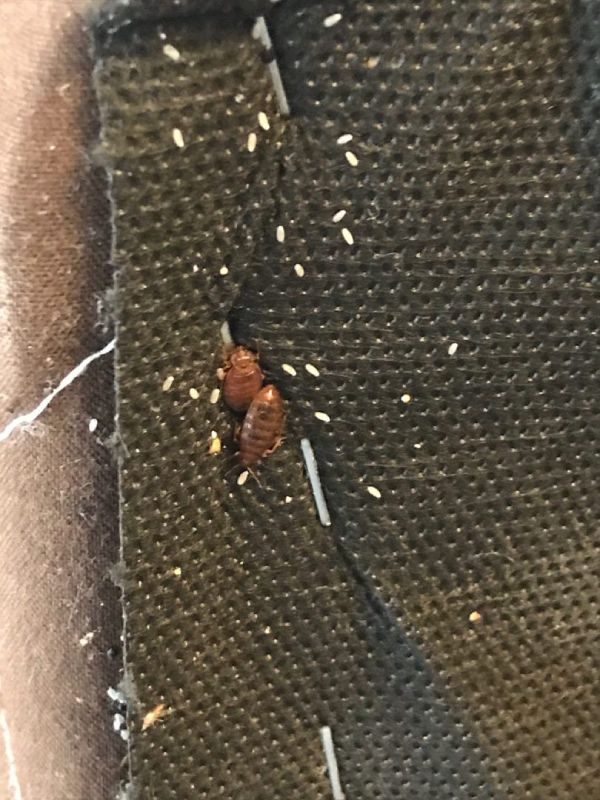Discovering the Science Behind Bed Bug Heat Treatments as a Lasting Pest Administration Technique
One such method that has actually acquired traction in recent years is the use of warm therapies to battle bed insect invasions. The complexities of just how heat efficiently eliminates bed bugs and the wider effects for sustainable pest monitoring methods make this a topic worth discovering better.
Bed Insect Heat Therapy Refine

Thermal Fatality Point for Bed Insects
Subjecting bed insects to elevated temperature levels beyond their thermal tolerance variety is critical for attaining effective elimination in warm therapy processes. The thermal fatality point for bed bugs refers to the temperature at which these insects can not survive. Research suggests that bed pests start to perish when subjected to temperatures over 113 ° F(45 ° C) for a sustained duration. As the temperature level raises, so does the death price of bed pests. At around 118 ° F(48 ° C ), bed pests begin to pass away quickly, with a death price of almost 99% within mins of exposure. This shows the level of sensitivity of bed pests to high temperature levels and highlights the efficiency of heat treatments in removing infestations. By reaching and keeping temperature levels above the thermal fatality factor for bed bugs, bug administration specialists can guarantee detailed removal of bed insect populations, consisting of hard-to-reach areas where chemical therapies may be less effective. Recognizing the thermal death point for bed insects is crucial for applying successful warmth treatment approaches and attaining lasting insect monitoring outcomes.
Benefits of Heat Treatments
Having actually developed the vital thermal death factor for bed pests, it is important to currently explore the significant benefits that heat treatments offer in effectively getting rid of these resistant insects. When compared to conventional chemical methods, warm treatments existing several essential benefits. Among the key benefits is that warm can pass through deep into gaps and splits where bed bugs conceal, making sure that also one of the most hard-to-reach areas are heated to dangerous temperature levels. This comprehensive method not only kills live bugs but also targets bed pest eggs, stopping future infestations.
In addition, warm therapies are non-toxic and eco-friendly, making them a sustainable insect administration Web Site technique. Unlike chemical pesticides, heat treatments do not leave unsafe residues that can pose threats to human health or the setting. This element is particularly vital in delicate atmospheres such as hospitals, schools, and suburbs where chemical usage may not be desirable.
Additionally, warm therapies have a high success rate in getting rid of bed pest invasions in a solitary treatment, minimizing the need for multiple sees and minimizing disturbance to passengers. This effectiveness not only saves time and money but likewise offers comfort to those dealing with bed bug troubles.
Efficiency of Warm Treatment

Research studies have consistently shown the effectiveness of warm therapies in achieving a high rate of bed bug mortality. Properly carried out heat treatments can reach all the fractures and gaps where bed bugs may be harboring, ensuring a detailed method to elimination. Furthermore, warm treatments have actually the added advantage of killing bed pest eggs, which are usually resistant to typical chemical therapies. In general, the performance of warm therapies in eradicating bed pest problems makes them a reputable and lasting bug monitoring technique.
Sustainable Parasite Management Conveniences
Executing sustainable bug management techniques uses lasting benefits for both the environment and public health and wellness. By utilizing approaches such as warm therapies for parasite control, we can lower the reliance on dangerous chemical pesticides that can have adverse results on ecosystems and human health and wellness - bed bug treatment. Sustainable parasite administration strategies aid in maintaining biodiversity by targeting details bugs without hurting non-target organisms, thus preserving a well balanced ecological community
Moreover, lasting bug management practices add to the general wellness and wellness of the general public. By reducing direct exposure to harmful chemicals made use of in traditional pest control approaches, warm therapies give a much safer option for parasite administration in property, business, and public spaces. This reduction in chemical usage additionally aids in avoiding chemical residues from polluting air, soil, and water, safeguarding ecological top quality.
Final Thought
In verdict, bed insect warmth therapies have been revealed to be a lasting and effective pest management strategy. The thermal death factor for bed insects makes them susceptible to heat treatments, which have countless benefits over traditional chemical therapies. The effectiveness of warm therapies in removing bed bug infestations while reducing environmental influence highlights the possibility of this method as a sustainable solution for bug control.
The bed pest heat treatment process entails raising the temperature level within infested areas to a level that properly eliminates bed insects and their eggs. By getting to and maintaining temperature levels above the thermal death factor for bed pests, pest monitoring professionals can make certain extensive removal of bed insect populaces, including hard-to-reach locations where chemical treatments might be much less effective. One of the key advantages is that warm can penetrate deep into cracks and gaps where bed bugs important link conceal, guaranteeing that also the most hard-to-reach areas are heated up to lethal temperatures. Unlike chemical therapies that may leave behind immune populaces, heat therapies provide a environmentally friendly and non-toxic solution that can permeate deep into furnishings, walls, and other hard-to-reach areas where bed pests conceal.
The thermal fatality factor for bed bugs makes them vulnerable to heat therapies, which have numerous benefits over conventional chemical treatments.